Question: who can go faster, a windsurfer or a kitesurfer?
Whether you’re a kitesurfer, a windsurfer or both – you’ve probably asked yourself this question.
Well, you’ve come to the right place, as we’ll take a good look at this question now.
- First Things First – A Level Playing Field
- How the Course Affects Speed Differently
- Going Upwind – Why Windsurfers Are Faster Than Kitesurfers
- Going Downwind – Why Kitesurfers Are Faster Than Windsurfers
- What About Running Straight Downwind?
- Going Crosswind – Why Windsurfers Are Faster Than Kitesurfers
- Why Wind Speed Matters
- Conclusion
- You Might Also Like…
First Things First – A Level Playing Field
This one should be self-evident, but let’s address this point first.
When trying to compare the maximum speed potential of windsurfing with that of kitesurfing, it has to be a fair comparison.
Specifically, the following are the underlying assumptions we’re making in this article for the sake of fairness:
- same wind strength
- same location
- same day
- same water conditions (chop, flat water, etc)
- same skill level
So in other words, we’re assuming that you and your friend are equally skilled on your windsurf board and kiteboard and that you’re duking it out at the same location on the same day.
Alternatively, you are adept at both sports, equip yourself with a GPS speed tracker, take a few runs on your windsurfing gear, then switch to your kite equipment and then compare speed results.
If these basic assumptions or requirements are not met, then any results from a comparison are purely anecdotal and random.
So no, comparing your measured max speed with your friend’s results which were measured on a different day at a different spot is not a valid comparison :).
How the Course Affects Speed Differently
You are probably already familiar with the basic wind course names (which apply to both windsurfing and kitesurfing), but just a quick recap.
Imagine an analog clock dial. Let’s assume the wind is blowing straight down from 12 to 6 o’clock, that’s our wind direction.
Beam Reach (or crosswind course) is when you’re going at a 90° angle to the wind. In kitesurfing lingo, this course is also known as “holding your ground”.
It’s a fitting name since you’re neither losing nor gaining ground (not going up or downwind) when beam reaching or going crosswind.
On our imaginary clock, that would be going from 9 to 3 o’clock (or the other way around).
If you are going upwind or windward (i.e. against or towards the wind), this is called Close Reach or Close Hauled (the latter going stronger upwind than the former).
On our clock, that’d be going from 8 to 2 o’clock (close reach) or from 7 to 1 o’clock (close hauling).
As you probably know, going anymore crosswind is impossible – you cannot go directly against the wind – close hauling is as close as it gets.
On the other hand, if you’re going downwind (i.e. with the wind or leeward), this is called Broad Reaching. This would be going from 10 or 11 o’clock towards 4 or 5 o’clock on our imaginary dial.
Unlike going directly against the wind (which is impossible), you can go directly with the wind in both sports – this is called Running.
Going Upwind – Why Windsurfers Are Faster Than Kitesurfers
A windsurfer will be able to go faster upwind than a kitesurfer – the harder upwind, the bigger the speed difference.
The reason for this is physics – a windsurfing board (also called a sailboard) has two distinct advantages over a kiteboard when going upwind.
The first being the longer board edge, and – more importantly – a much bigger fin surface.
Especially the windsurf board’s fin is the reason why a windsurfer will always be able to go upwind much easier and faster than a kitesurfer.
That’s because the fin creates uplift, which helps the windsurfer keep planing even when pulling upwind (which is always slower than going crosswind or downwind).
The other effect the fin provides is that it prevents the sailboard from losing height, meaning from drifting downwind.
That’s why a windsurfer with a particularly long fin (big surface area) will be able to start planing sooner and go upwind harder and faster than with a smaller fin.
That’s also the reason why windsurfers are able to go faster than the wind speed (but let’s not get into vector mathematics and relative wind speed right now).
Given the comparatively tiny kiteboard fins, it’s no wonder why a kitesurfer will usually lose any upwind speed run against a windsurfer.
Going Downwind – Why Kitesurfers Are Faster Than Windsurfers
The very reasons why windsurfers can go faster upwind are actually also the reasons why kitesurfers are usually faster going downwind.
In other words, the bigger fins on a windsurfing board prevent it from going downwind as fast as kitesurfers can.
That’s because the bigger fin creates a much higher water resistance, effectively slowing down the windsurf board.
A kiteboard’s much smaller fins offer much less water resistance, which is why a kiteboard is dragged or pulled downwind much easier.
What About Running Straight Downwind?
Running directly downwind is usually not something people do or like a lot – neither kitesurfers nor windsurfers.
That might be surprising to hear for someone who hasn’t experienced this course first hand yet. But any windsurfer or kitesurfer will know the inherent issue that comes with running downwind.
The more you enter on a broad reach course – and eventually end up running straight downwind – the more unstable the whole situation becomes.
It’s true, you gain a lot of speed – but combine that with an increasing loss of control and you know why that’s not a course you will choose most of the time.
After all, speed is nothing without control (except dangerous).
Having said all that: kitesurfers will be able to blast downwind much faster than windsurfers, for the same reasons that enable them to go faster on any downwind course.
Whether they’ll be able to control that ride and safely slow down without crashing spectacularly at the end of that run, well that’s a different kettle of fish.
Going Crosswind – Why Windsurfers Are Faster Than Kitesurfers
If you’ve read and understood everything that we’ve covered so far, then it’s going to be clear why Windsurfers are generally faster than kitesurfers on a beam reach (crosswind) course.
The main reason for this is – once again – the fin. It prevents the sailboard much more effectively from drifting downwind than the much smaller kiteboard fins.
To counteract this, kitesurfers have to carve much harder to hold their ground (maintain crosswind course), which slows them down.
Windsurfers, on the other hand, can keep their board level on the water surface, minimizing water contact (which would slow them down), while maintaining crosswind course.
Kitesurfers also don’t have the benefit of the uplift generated by the bigger sailboard fin, which helps to maintain speed and course at the same time.
Why Wind Speed Matters
You’ve probably noticed that kitesurfers need considerably less wind than windsurfers – with their kites having much bigger surface areas than windsurfing sails and being higher up to catch more wind.
So obviously, in low wind conditions (6 to 11-ish knots), kitesurfers are much better off than windsurfers.
Kitesurfers are able to accelerate much quicker than windsurfers can, especially in low wind conditions (where windsurfers may not even be able to get planing and just slog along).
On the flip side, in strong wind conditions (25 knots and up), you’ll usually see more windsurfers than kitesurfers on the water. The stronger the wind, the fewer kitesurfers you’ll see.
This is the inevitable counterpart of why kitesurfers are better off in light wind conditions. Windsurfers are able to maintain control much better in strong winds.
Add to that the fact that the stronger the wind, the choppier the water generally gets, which makes it much harder for kitesurfers (since they lose water contact much faster with their smaller fins, which means they fly downwind).
For windsurfers, choppy conditions or straight up waves are usually no problem (given adequate skill), and some windsurfers even prefer rough conditions over flat water.
All this is to say that when it comes to strong winds, windsurfers generally have a natural edge in terms of speed potential as rougher conditions favor them.
And that’s not even talking about slalom and race windsurfers with their super long fins and camber sails for massive power.
Conclusion
So, who is the “winner”, who is faster – windsurfer or kitesurfer?
As you can see, there’s no simple answer which is true under all circumstances.
It mainly depends on the wind strength, the water conditions and the course you’re going in relation to the wind.
We’ve analyzed the juicy details in this article, but one possible general statement would be this:
All else being equal, windsurfers can go faster crosswind and upwind as well as in strong wind and choppy conditions, whereas kitesurfers have an edge going downwind and in light wind conditions.
There you have it.
Another possible summary would be this:
Who’s faster? Who cares! Now go out and have fun 🙂 !
You Might Also Like…
-
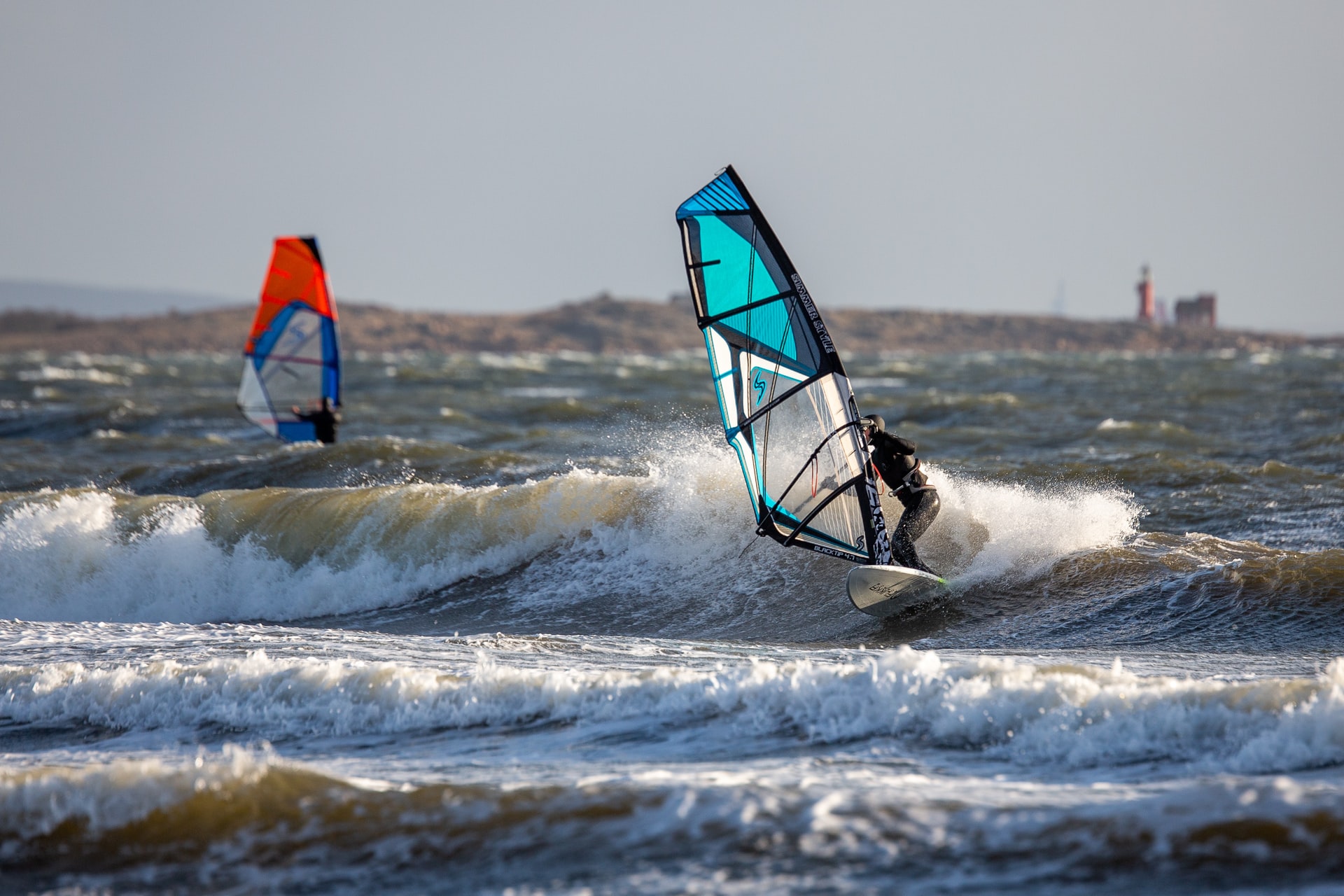
Surfing vs. Windsurfing: 8 Major Differences (& 4 Similarities)
-
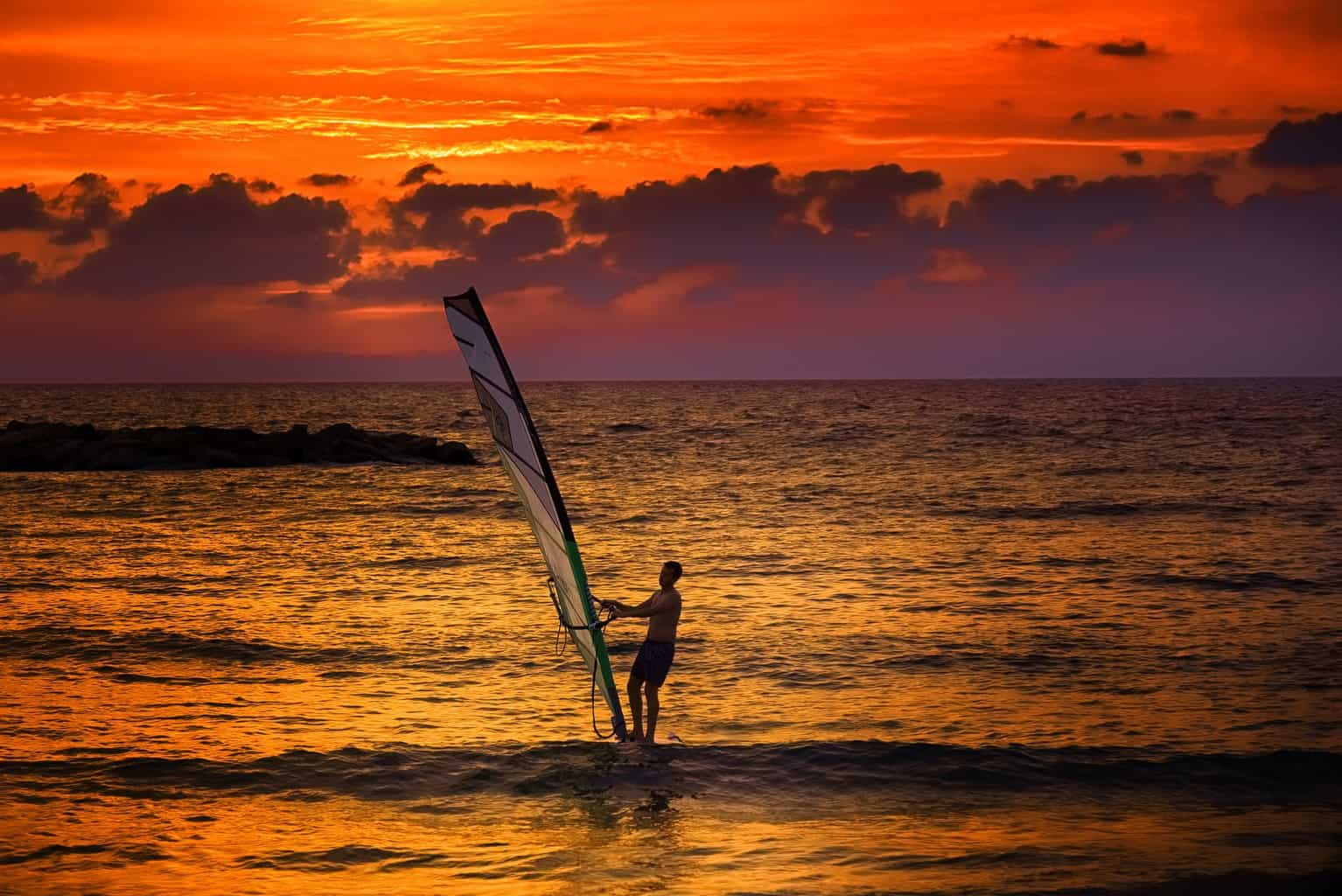
How Does Windsurfing Affect the Environment? (+8 Practical Tips)
-
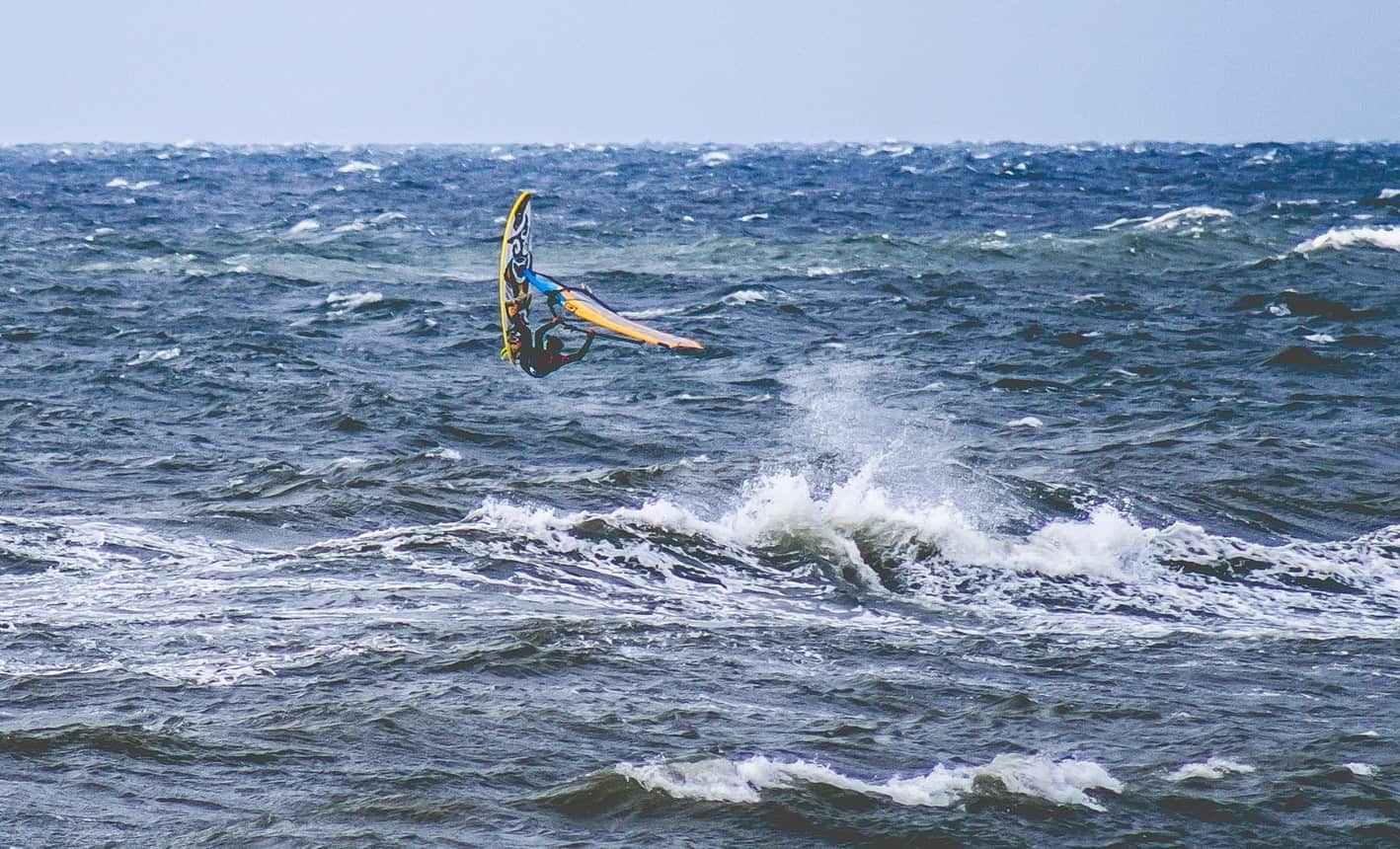
Is Windsurfing Dangerous? 14 Risks (& How to Avoid Them)
-
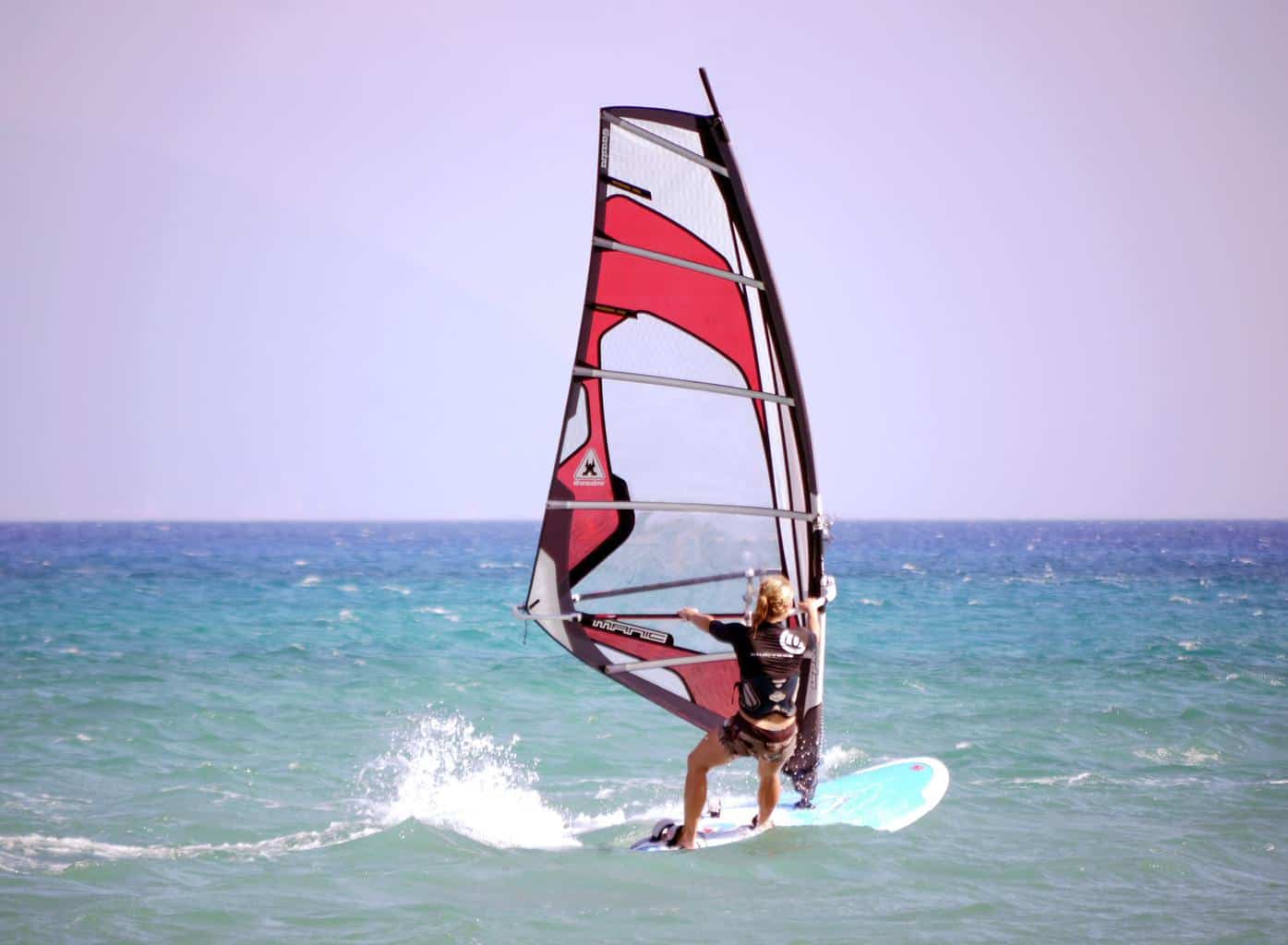
Windsurfing – 7 Common Beginner Questions (Answered)
-
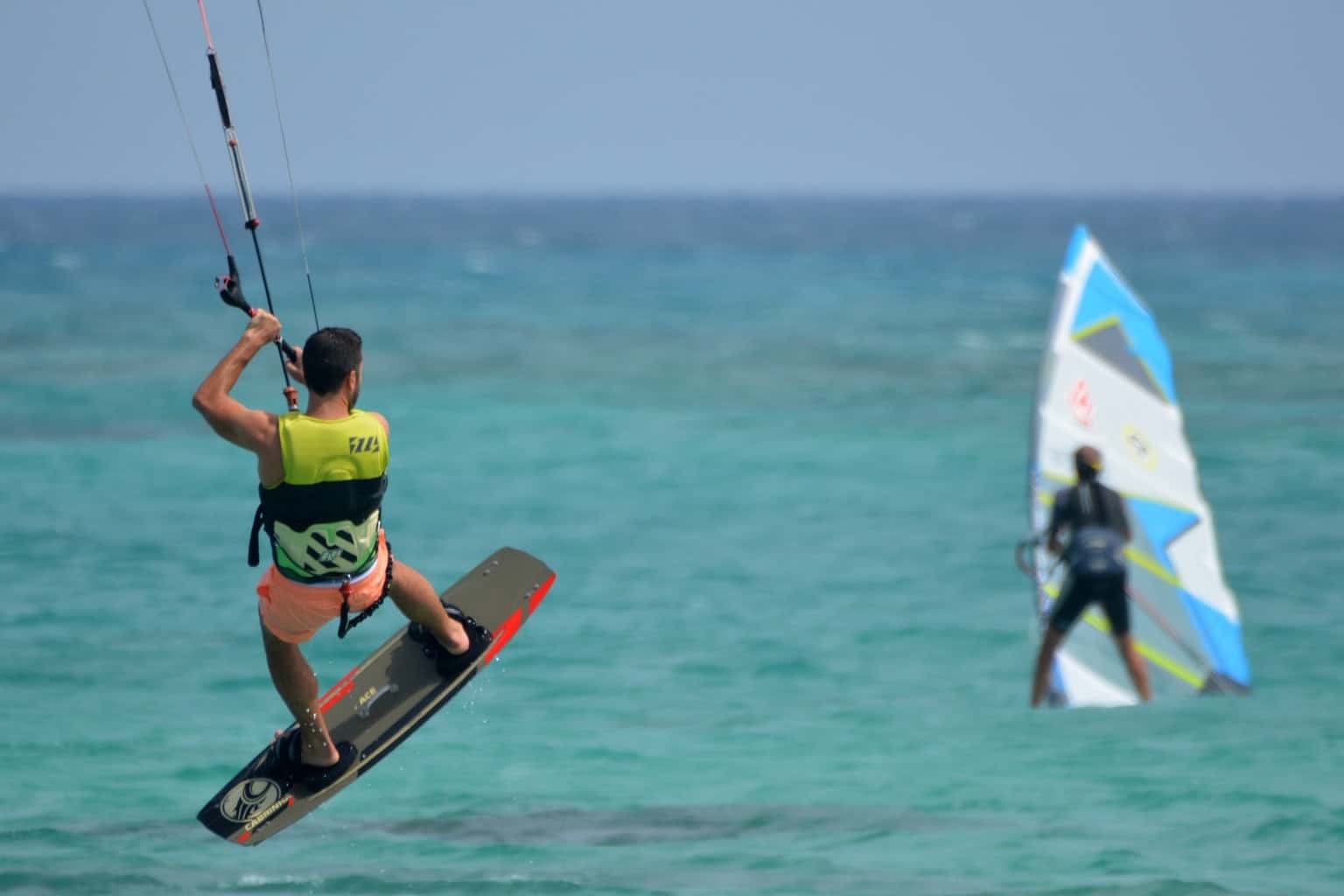
Is Windsurfing Faster Than Kitesurfing? (An Honest Look at the Facts)
-
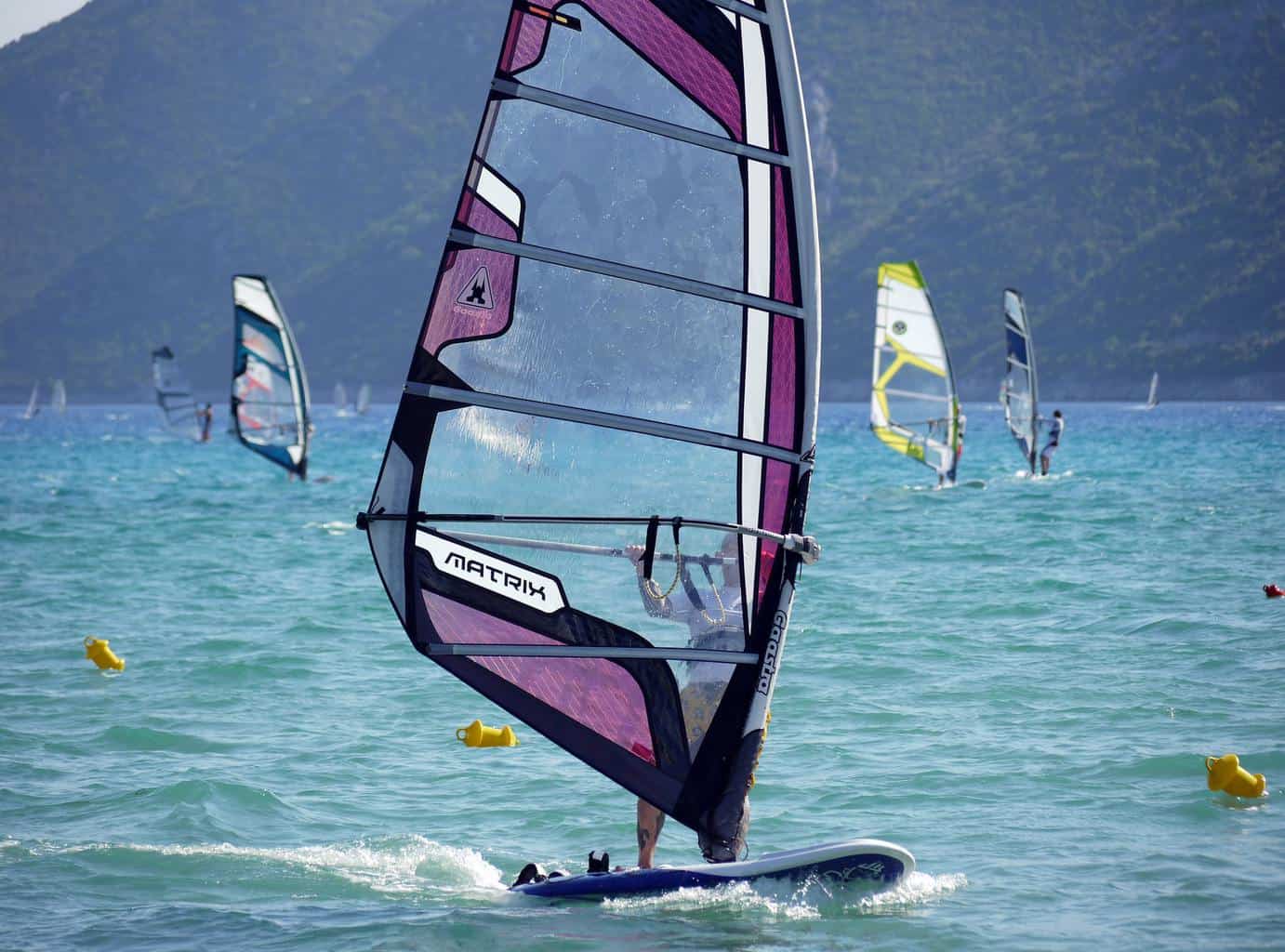
How to Choose the Right Windsurfing Sail Size (With Chart)
-
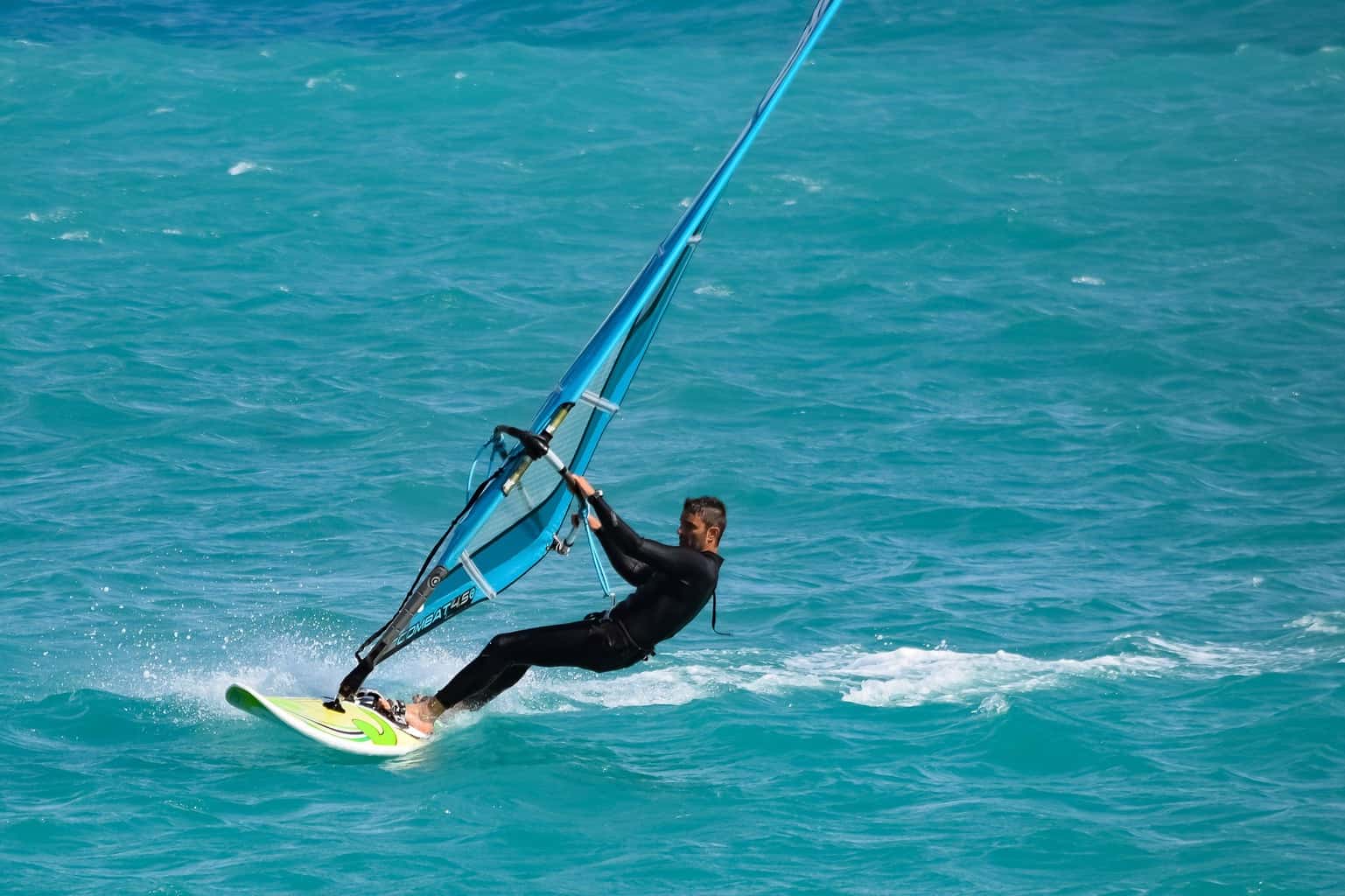
Windsurfing: How Much Downhaul Is Needed? (Essential Facts)
-
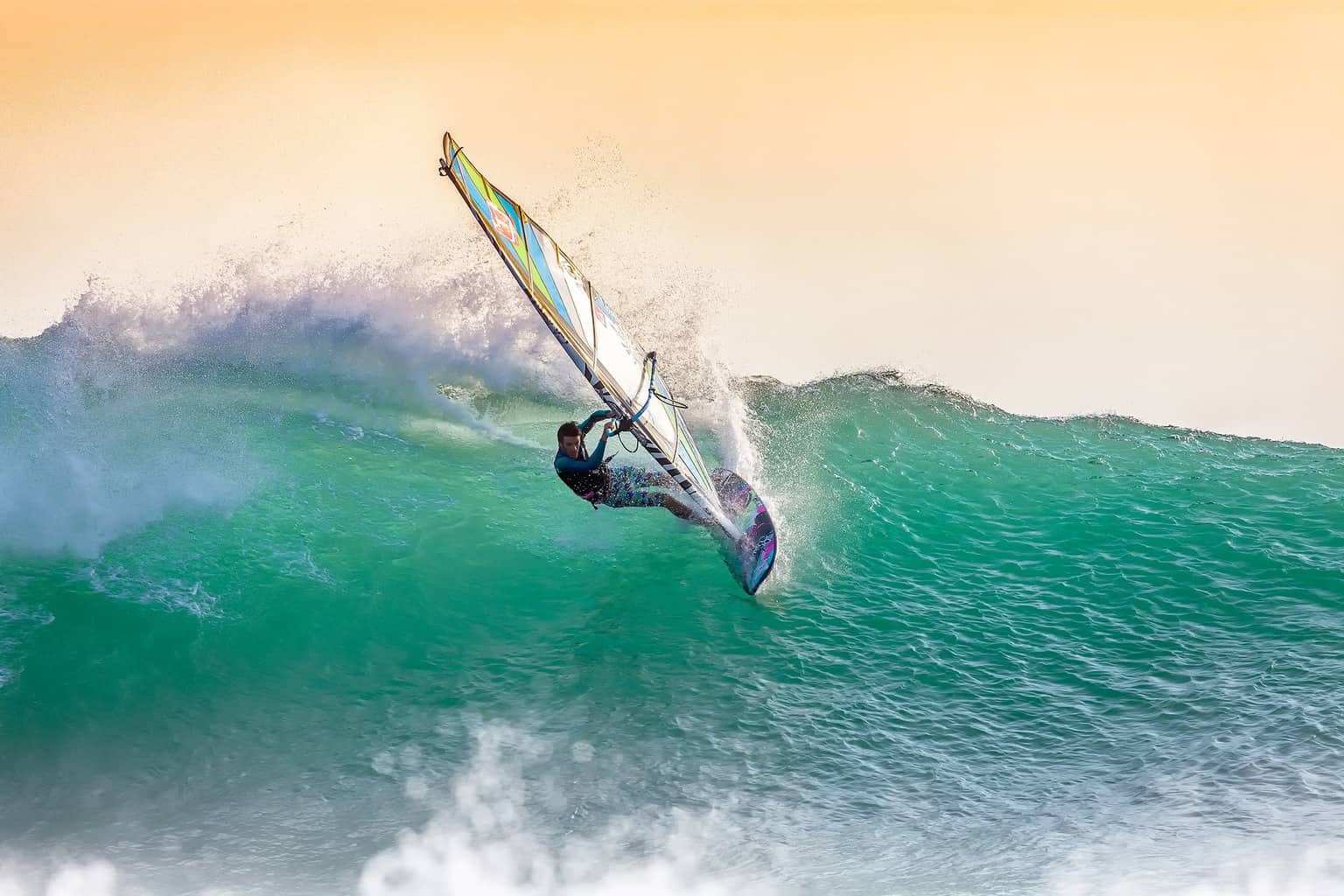
Is Windsurfing an Extreme Sport? (All You Need to Know)
-
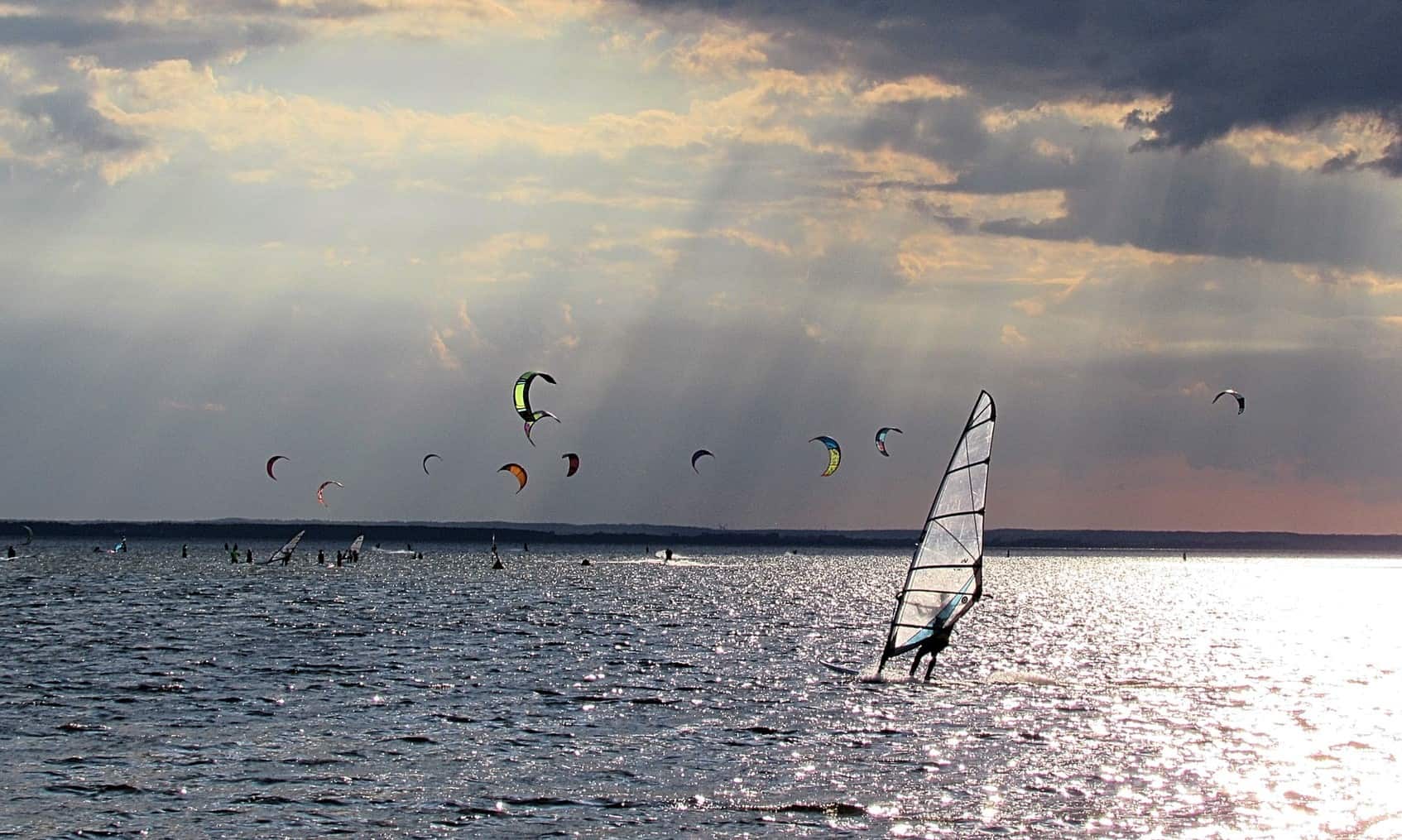
Is Windsurfing Easier Than Kitesurfing? (An Honest Comparison)
-
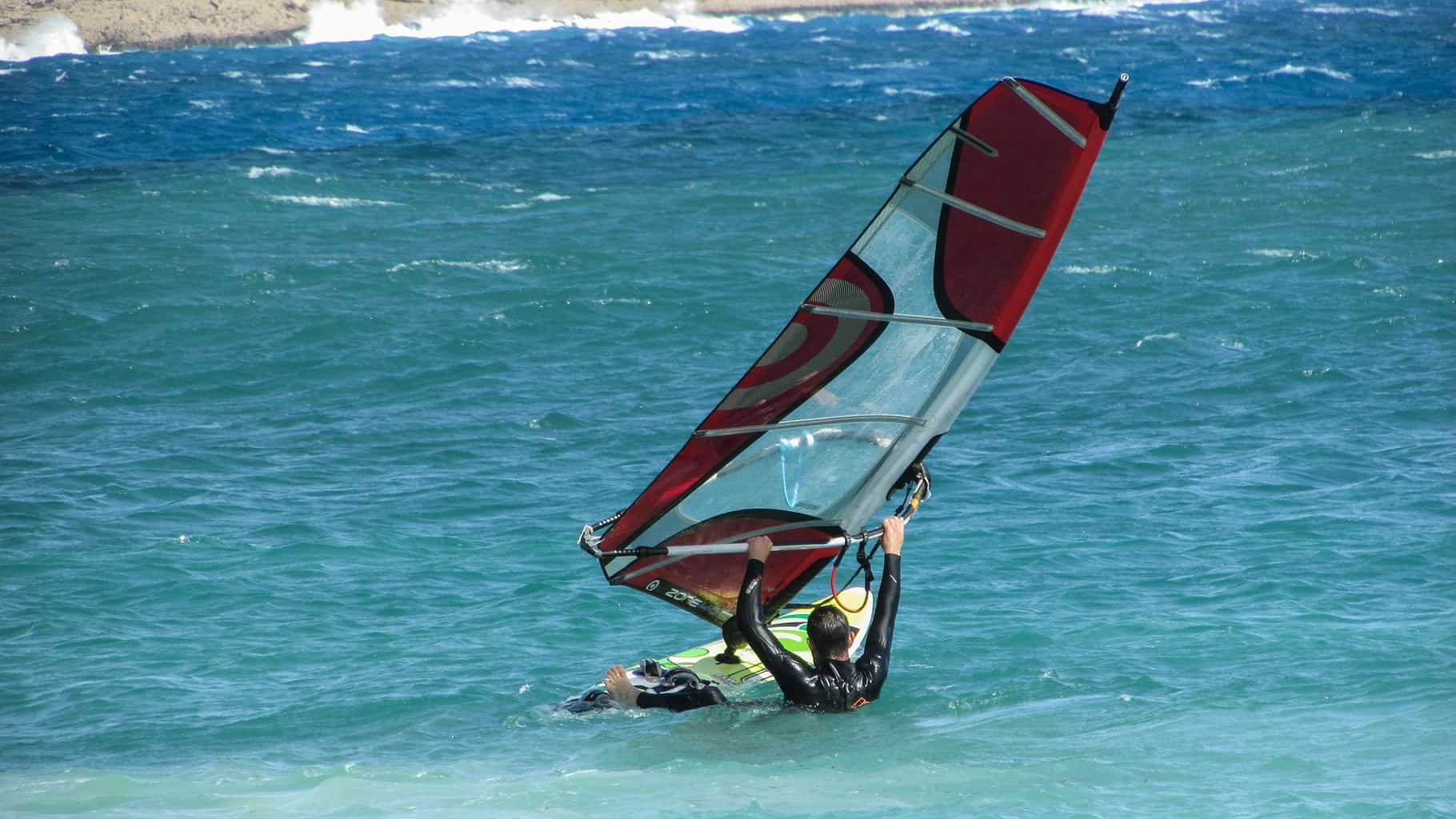
Is Windsurfing Harder Than Surfing? (Honest Comparison)
-
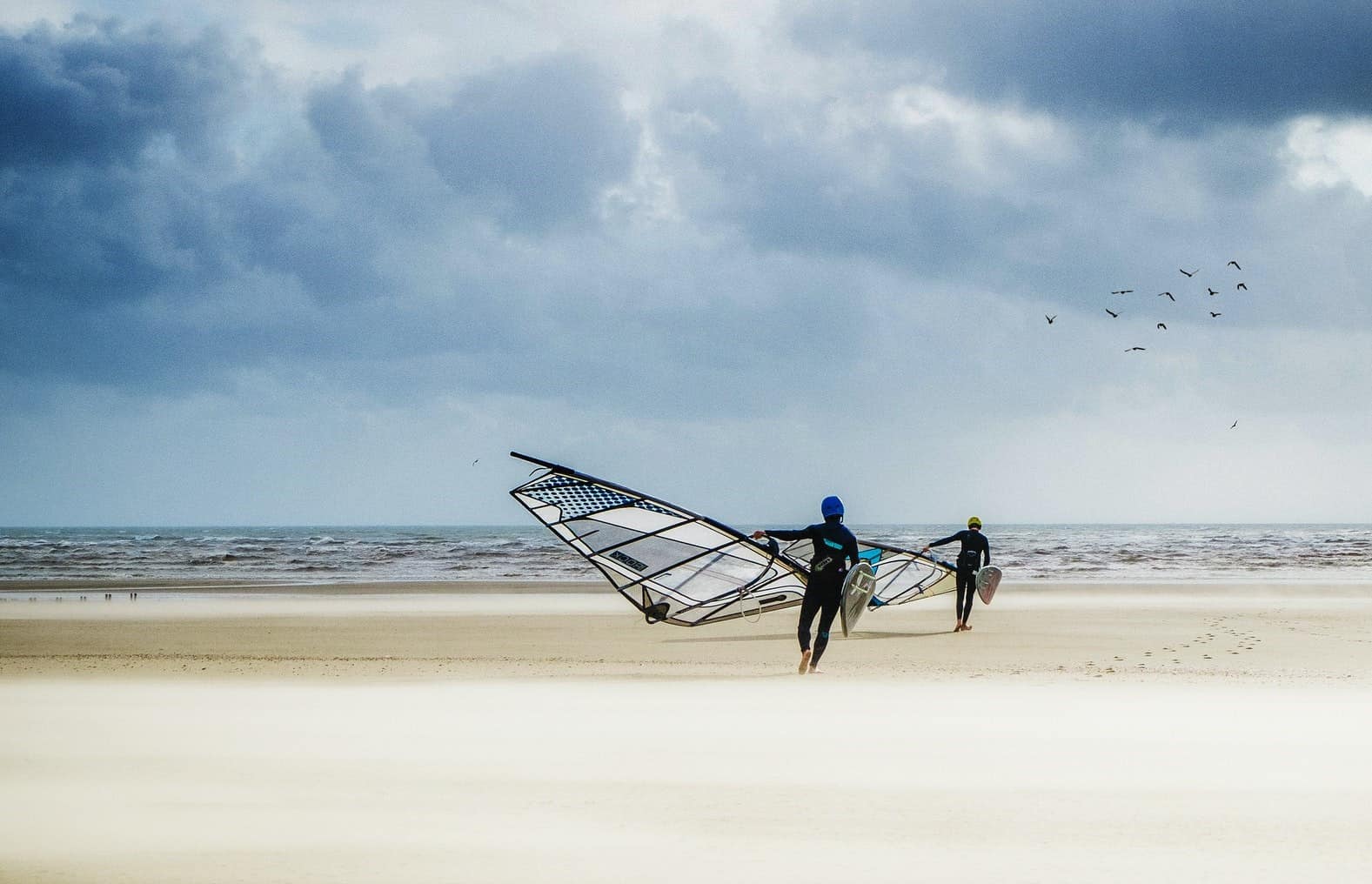
Is Windsurfing Still Popular? (An Insider’s Look at the Facts)











